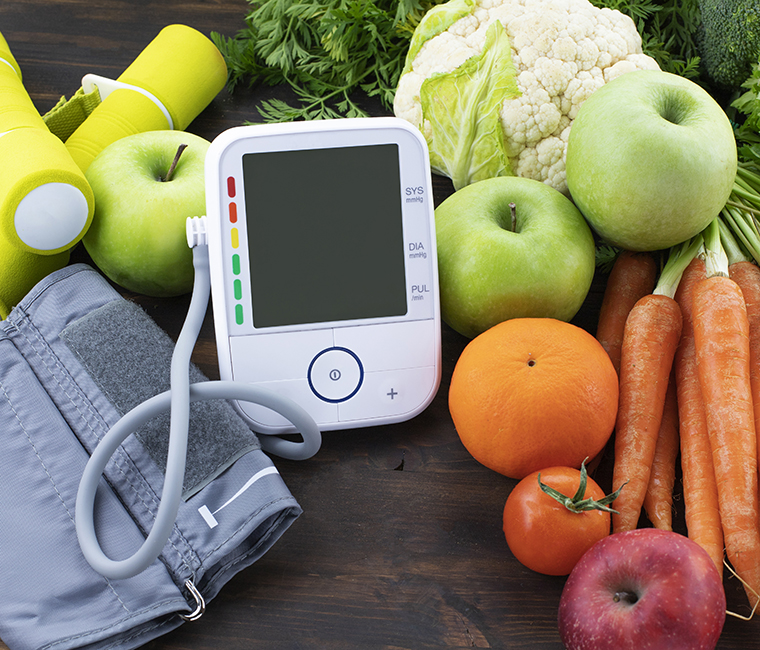There are many important numbers to know, but no number is more important to your health than your blood pressure. According to American Heart Association guidelines, high blood pressure, or hypertension, is defined as a reading of 130 over 80.
Washington University cardiologist Andrew Kates, MD, says, “High blood pressure puts people at risk for stroke, heart attacks, cardiovascular disease, disability and death. People with stage one hypertension (130 to 139 over 80 to 89) can usually bring down their blood pressure through simple lifestyle changes. These changes include daily exercise, sodium restriction and getting adequate sleep.”
DAILY EXERCISE
Ten minutes of brisk or moderate walking, three times a day – or one 30-minute walk every day has been shown to effectively reduce blood pressure. Regular physical activity makes your heart stronger. A stronger heart can pump more blood with less effort. As a result, the force on your arteries decreases, lowering your blood pressure.
Any activity that raises your heart rate is good for you — biking, swimming, hiking, dancing, jogging, tennis, pickleball, basketball. It is important to remember that the key is daily exercise – if you don’t use it (every day), you will lose it (the benefits of exercise). Dr. Kates advises, “Always check with your doctor before starting a new exercise program.”
REDUCING SODIUM INTAKE
Too much sodium in your system promotes water retention in the bloodstream. Over time, the extra volume of blood can stress and stiffen blood vessels, making the heart work harder to maintain blood flow. The whole process can lead to an increased blood pressure and risk of heart attack and stroke.
The average person consumes about 3,400 mg of sodium per day, and most of it comes from packaged and prepared foods, according to federal dietary guidelines. Those guidelines recommend adults consume no more than 2,300 mg per day – that’s about one teaspoon of salt – to avoid hypertension and cardiovascular disease. The American Heart Association recommends most adults limit daily intake to 1,500 mg.
Most sodium in people’s diets comes from processed foods. The “Salty Six” lists the top sodium sources:
- Breads and rolls
- Pizza
- Sandwiches
- Cold cuts and cured meats
- Soup
- Burritos and tacos
Just being aware of the popular foods that are high in sodium can be very useful in reducing your daily sodium intake – and in improving your overall health in the long run.
GET A GOOD NIGHT’S SLEEP
Sleep disruption or lack of adequate sleep time can increase blood pressure. Sleep experts recommend that adults should get seven to eight hours of a sleep each night. During normal sleep, your blood pressure goes down. Having sleep problems means your blood pressure stays higher for a longer period of time. Getting less than six hours of sleep is known to be bad for your overall health.
Stress, jet lag, shift work and other sleep disturbances make you more likely to develop heart disease and risk factors for heart disease, including obesity and diabetes.
Sleep is critical to good health. Sleep is not a luxury — it helps your body repair itself.
WHEN TO START MEDICATION
Dr. Kates explains, “If making lifestyle changes don’t help reduce blood pressure within six months for those with stage one hypertension (130 to 139 over 80 to 89), those individuals may be advised by their doctor to consider medication.
Stage two hypertension is defined with blood pressure of 140 over 90, or higher. People with stage two should probably be on medication.”
Dr. Kates adds, “It is a challenge for doctors to convince patients who feel fine, but have high blood pressure, to take medication. That is why high blood pressure is known as the silent killer. People might feel like they are failures if they need medications to treat blood pressure. But our goal, as physicians, is to help people live longer and healthier lives.”
Blood pressure should be checked at least once a year. High blood pressure is only diagnosed after several readings on multiple occasions. Some people actually have “white coat syndrome.” This means that their blood pressure automatically rises in a doctor’s office or medical setting. These people should try at-home or automatic blood pressure cuffs found in pharmacies and grocery stores. They should also sit quietly for a few minutes before taking their blood pressure in order to get a more accurate reading.
“Know your numbers,” urges Dr. Kates. “It can save your life.”
To make an appointment to see Dr. Kates or another Washington University cardiologist, please call 314-362-1291.
Heart & Vascular Center
Center for Advanced Medicine
4921 Parkview Place, Suite 8B
St. Louis, MO 63110
